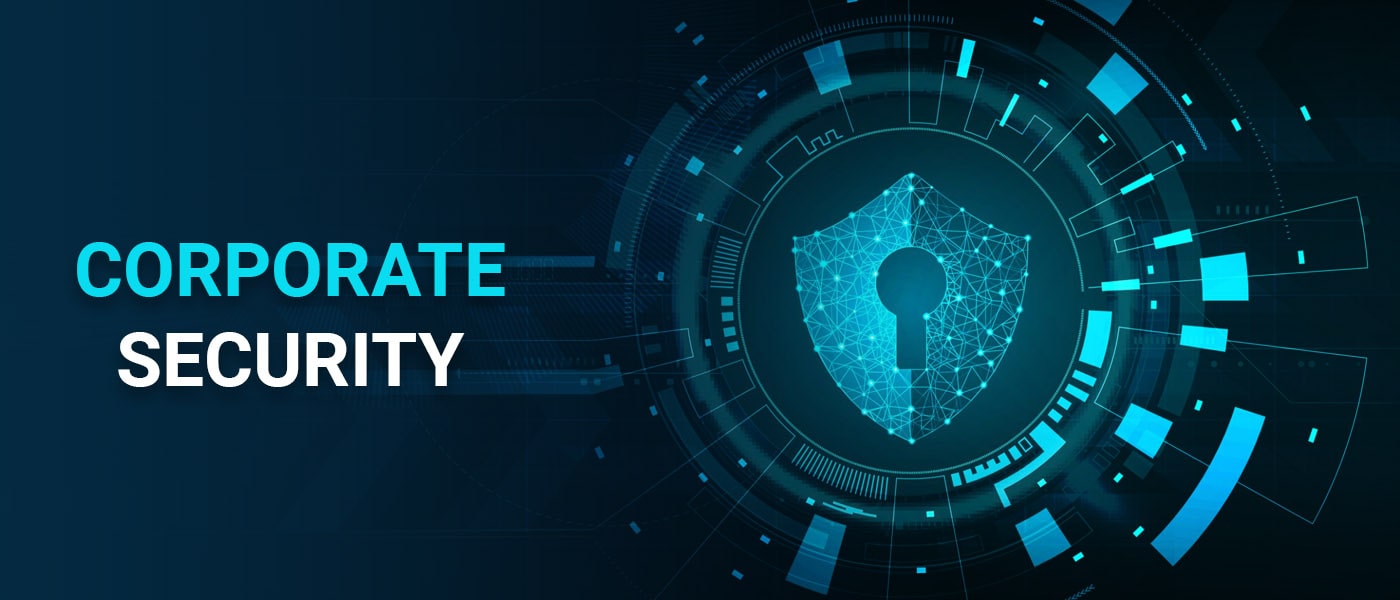Securing Your Organization: Corporate Security Fundamentals Revealed
Securing Your Organization: Corporate Security Fundamentals Revealed
Blog Article
From Cybersecurity to Physical Measures: Reinforcing Company Safety And Security in a Changing World
By incorporating the strengths of both cybersecurity and physical safety, business can produce a thorough defense technique that deals with the varied array of hazards they face. In this conversation, we will explore the changing threat landscape, the requirement to incorporate cybersecurity and physical protection, the application of multi-factor authentication steps, the relevance of employee recognition and training, and the adaptation of protection steps for remote workforces. By taking a look at these key areas, we will certainly acquire useful understandings right into exactly how organizations can strengthen their business safety in an ever-changing globe.
Understanding the Changing Risk Landscape
The developing nature of the modern world demands a comprehensive understanding of the altering hazard landscape for reliable company security. In today's interconnected and digital age, dangers to corporate safety and security have actually come to be much more intricate and innovative. As technology advances and services end up being increasingly reliant on electronic framework, the capacity for cyberattacks, data breaches, and various other security breaches has significantly increased. It is crucial for companies to stay notified and adjust their safety measures to attend to these evolving threats.
One key aspect of recognizing the transforming danger landscape is recognizing the different kinds of dangers that organizations face. In addition, physical hazards such as theft, vandalism, and company reconnaissance continue to be widespread issues for organizations.
Tracking and evaluating the hazard landscape is crucial in order to identify potential risks and vulnerabilities. This entails staying upgraded on the most recent cybersecurity trends, assessing danger knowledge records, and performing routine threat analyses. By understanding the transforming danger landscape, companies can proactively apply ideal safety and security steps to alleviate dangers and secure their assets, credibility, and stakeholders.
Integrating Cybersecurity and Physical Safety And Security
Incorporating cybersecurity and physical safety and security is important for thorough business defense in today's interconnected and digital landscape. As companies increasingly count on innovation and interconnected systems, the boundaries between physical and cyber threats are becoming blurred. To successfully guard against these threats, an all natural strategy that integrates both cybersecurity and physical safety steps is important.
Cybersecurity concentrates on safeguarding electronic properties, such as systems, information, and networks, from unapproved access, disturbance, and burglary. Physical security, on the other hand, incorporates steps to protect physical possessions, individuals, and facilities from susceptabilities and risks. By incorporating these 2 domain names, organizations can deal with vulnerabilities and risks from both digital and physical angles, thus boosting their overall safety posture.
The assimilation of these 2 self-controls permits for an extra thorough understanding of safety and security threats and makes it possible for a unified action to occurrences. As an example, physical access controls can be improved by integrating them with cybersecurity methods, such as two-factor verification or biometric recognition. Cybersecurity measures can be matched by physical security measures, such as monitoring cams, alarms, and protected access points.

Executing Multi-Factor Verification Measures
As organizations increasingly prioritize detailed safety and security measures, one efficient method is the execution of multi-factor authentication actions. Multi-factor authentication (MFA) is a safety and security method that calls for customers to supply numerous types of recognition to access a system or application. This technique adds an additional read the article layer of security by integrating something the individual knows, such as a password, with something they have, like a finger print or a security token.
By carrying out MFA, companies can considerably boost their security stance - corporate security. Typical password-based authentication has its restrictions, as passwords can be easily jeopardized or forgotten. MFA alleviates these threats by including an additional verification variable, making it a lot more challenging for unauthorized individuals to access to delicate info
There are numerous kinds of multi-factor authentication methods readily available, including biometric verification, SMS-based confirmation codes, and equipment tokens. Organizations require to assess their details needs and choose the most ideal MFA remedy for their demands.
Nonetheless, the execution of MFA should be thoroughly intended and performed. It is vital to strike an equilibrium between safety and security and functionality to stop customer frustration and resistance. Organizations ought to additionally think about potential compatibility issues and provide appropriate training and assistance to ensure a smooth shift.
Enhancing Worker Recognition and Training
To strengthen business safety, organizations must focus on boosting employee recognition and training. Several security breaches take place due to human mistake or lack of understanding.
Effective worker awareness and training programs need to cover a wide variety of subjects, including information security, phishing attacks, social design, password health, and physical safety measures. These programs must be tailored to the specific demands and responsibilities of different staff member duties within the organization. Routine training workshops, sessions, and simulations can assist employees create the required skills and understanding to recognize and respond to safety risks successfully.
Moreover, organizations must urge a culture of protection understanding and provide ongoing updates and suggestions to keep workers informed concerning the current threats and mitigation methods. This can be done with interior communication channels, such as e-newsletters, intranet websites, and email projects. By fostering a security-conscious labor force, companies can dramatically decrease the possibility of security occurrences and safeguard their valuable properties look here from unapproved accessibility or concession.

Adapting Safety And Security Procedures for Remote Labor Force
Adapting company security steps to fit a remote workforce is essential in making go to these guys certain the protection of sensitive details and properties (corporate security). With the raising trend of remote work, organizations have to implement appropriate safety and security actions to minimize the threats connected with this new means of functioning
One crucial facet of adjusting security steps for remote work is establishing safe interaction channels. Encrypted messaging platforms and digital personal networks (VPNs) can aid protect delicate info and prevent unapproved accessibility. In addition, organizations should impose using solid passwords and multi-factor verification to improve the security of remote gain access to.
An additional vital factor to consider is the application of safe remote accessibility remedies. This includes providing workers with safe and secure accessibility to company resources and data with online desktop infrastructure (VDI), remote desktop computer procedures (RDP), or cloud-based remedies. These innovations guarantee that sensitive info remains safeguarded while allowing workers to execute their roles successfully.

Lastly, comprehensive safety recognition training is essential for remote staff members. Educating sessions should cover finest practices for safely accessing and dealing with delicate information, recognizing and reporting phishing attempts, and preserving the overall cybersecurity hygiene.
Conclusion
In final thought, as the threat landscape proceeds to develop, it is critical for organizations to reinforce their safety and security measures both in the cyber and physical domain names. Integrating cybersecurity and physical safety, executing multi-factor authentication procedures, and improving employee awareness and training are important actions in the direction of accomplishing robust company safety and security.
In this conversation, we will explore the changing risk landscape, the demand to incorporate cybersecurity and physical safety and security, the execution of multi-factor verification procedures, the importance of employee understanding and training, and the adjustment of safety measures for remote workforces. Cybersecurity actions can be complemented by physical safety steps, such as surveillance cams, alarms, and safe access points.
As organizations increasingly focus on detailed security measures, one reliable technique is the implementation of multi-factor verification procedures.In final thought, as the threat landscape continues to progress, it is essential for companies to enhance their safety and security determines both in the cyber and physical domain names. Integrating cybersecurity and physical safety and security, implementing multi-factor authentication measures, and boosting staff member recognition and training are vital actions in the direction of accomplishing robust company security.
Report this page